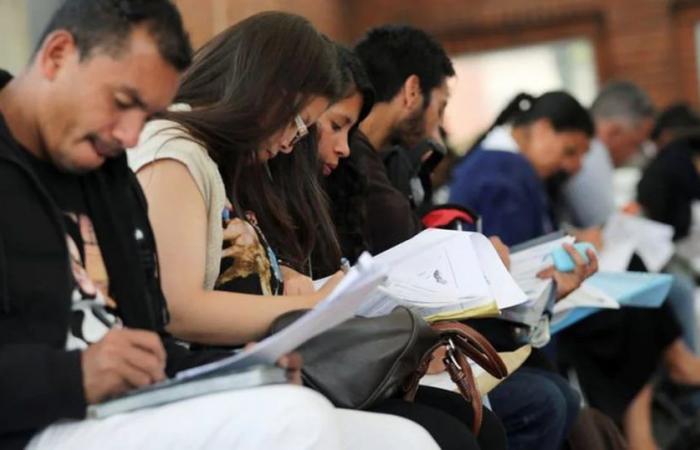
Beyond the increase of 0.8 points compared to last year, a zoomed-in look at the unemployment figures exposes a series of data that show the particular dynamics of the economic crisis. Essentially, a level of unemployment that grew but was expected to be higher, perhaps due to the so-called “discouragement effect” in finding work – therefore, those aspiring to get a job do not look for it, so they are not counted as “unemployed” for statistics. ”–, a situation that coexists with that of workers who are looking for more work to compensate for the loss of income. Both postcards of a crisis that unequally affected registered and informal employment.
Of all the salient aspects that the different labor market analysts highlighted, they all agreed to highlight the increase in the number of employed job seekers, that is, those who already have a job but find it insufficient and are looking to work more hours.
“The demand for underemployment increased by 0.8 points, the same as in the ’90s. Income falls, people need to work more hours to generate the same income” (Pastrana)
“The most worrying data comes from the pressure on the labor market, which jumped from 26.9% to 29.5%. This is explained not only by the increase in unemployment, but fundamentally by the employed job seekers who, due to a drop in wages, are looking for more work,” explained the economist from the CTA Observatory, Luis Camposwho in turn highlighted that although the interannual variation is important, “it is not the highest in the recent period” since it is in second place after the increase of one percentage point between the first quarter of 2018 and the same period of 2019. In any case, he warned that the greatest risk is in its future evolution, which has little prospect of improving, at least in the current quarter.
Also the macroeconomist Federico Pastranadirector of CP Consultores and specialist in the labor market, highlighted the impact of the drop in income on employment.
“The number of people seeking to work more hours has increased. More unregistered, unskilled, and lower-educated jobs were destroyed. Understanding the effects of the crisis involves looking at average salaries and unemployment but also at its composition,” said the expert who added: “The demand for underemployment increased by 0.8 points, the same as in the ’90s. Income falls, people need to work more hours to generate the same income,” he explained.
Likewise, the data released yesterday by Indec marked another symptom of the crisis: informal work, which usually registers growth to the detriment of employment registered in periods of recession, had a different behavior in the first quarters of the year. It was the sector in which the most jobs were destroyed, which indicated, according to Pastrana, that informality did not act as a “refuge” from the threat of unemployment.
“The most worrying data comes from the pressure on the labor market, which jumped from 26.9% to 29.5%” (Campos)
Along the same lines, qualified formal employment is the one that denotes the greatest resistance, given the difficulty for companies to find this type of personnel. On the other hand, those positions that require a lower qualification are those that had the greatest impact. This statistic is consistent with the educational level: those with incomplete primary and secondary education are the most affected by unemployment.
For the second quarter, the possibilities of improvement based on a level of activity somewhat better than that of the first three months of the year, remain latent although far from being assured.
According to the consulting firm LCG, the results released yesterday “were expected in a recessionary framework and undoubtedly had their effect in moderating increases in prices and salaries. For the second quarter of this year, it is possible that we will see an attenuation of the deterioration in labor market numbers due to an eventual (slight) improvement in activity indicators,” he said, although he clarified that both the relative price correction ahead , which may continue to negatively impact the level of activity, such as a possible increase in the number of people seeking employment (economically active population), may neutralize this improvement.





